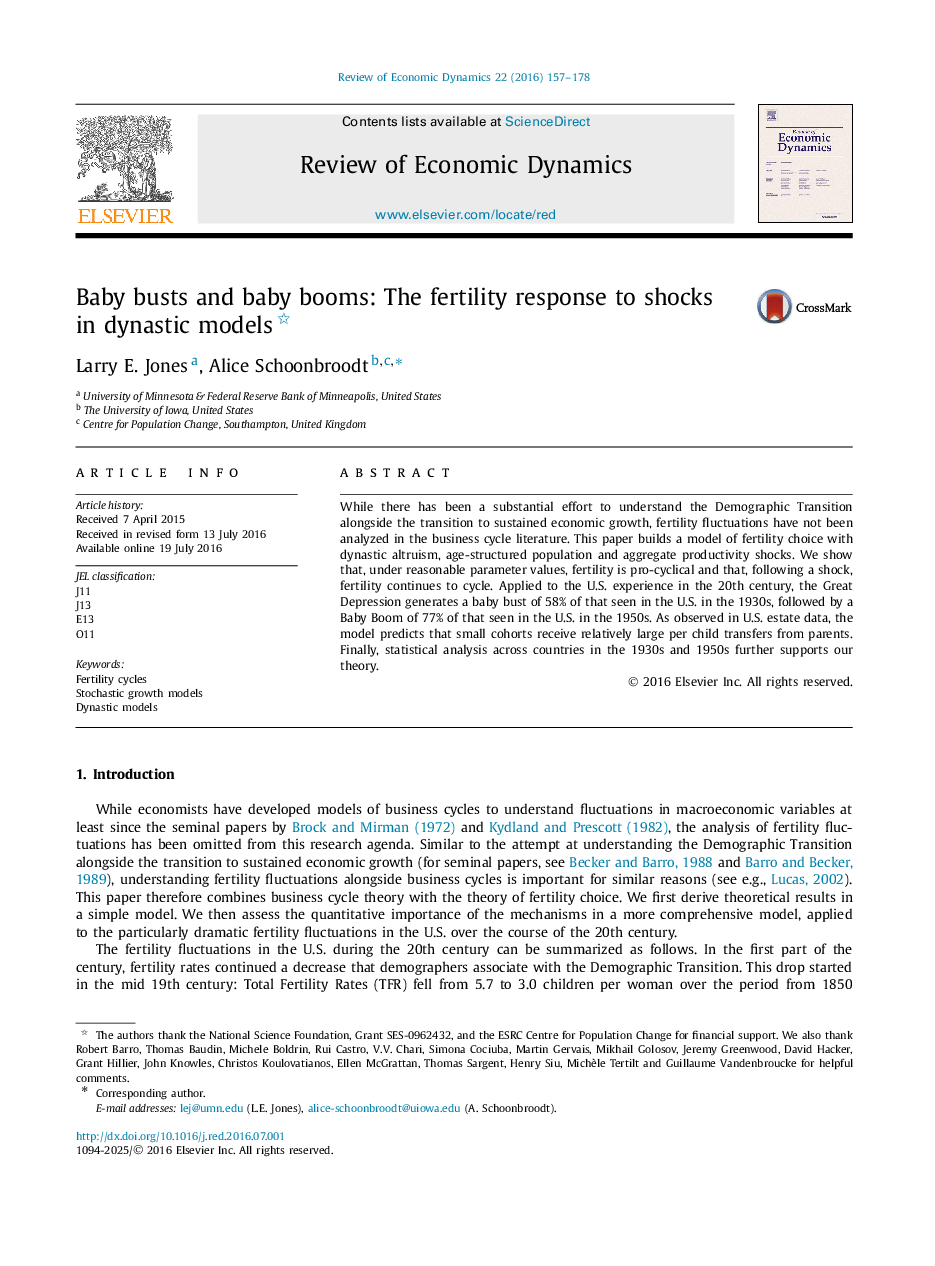| Article ID | Journal | Published Year | Pages | File Type |
|---|---|---|---|---|
| 7388256 | Review of Economic Dynamics | 2016 | 22 Pages |
Abstract
While there has been a substantial effort to understand the Demographic Transition alongside the transition to sustained economic growth, fertility fluctuations have not been analyzed in the business cycle literature. This paper builds a model of fertility choice with dynastic altruism, age-structured population and aggregate productivity shocks. We show that, under reasonable parameter values, fertility is pro-cyclical and that, following a shock, fertility continues to cycle. Applied to the U.S. experience in the 20th century, the Great Depression generates a baby bust of 58% of that seen in the U.S. in the 1930s, followed by a Baby Boom of 77% of that seen in the U.S. in the 1950s. As observed in U.S. estate data, the model predicts that small cohorts receive relatively large per child transfers from parents. Finally, statistical analysis across countries in the 1930s and 1950s further supports our theory.
Keywords
Related Topics
Social Sciences and Humanities
Economics, Econometrics and Finance
Economics and Econometrics
Authors
Larry E. Jones, Alice Schoonbroodt,
